
AVOID THE CROWDS AND DISCOVER OUR TEAM’S SEVEN ALTERNATIVE WONDERS TO ADD TO THE BUCKET LIST FOR YOUR NEXT BIG ADVENTURE
Our seven Hidden wonders have been carefully curated to showcase a handful of our favourite undiscovered places and celebrate the people that make them so special.
As we return once again to discovering the world, over-tourism is a plight we can no longer ignore. Of course, we have always recognised the value of lesser-known sights and avoiding the crowds. But now, more than ever, it is time to slow down and head to destinations where your feet aren’t two amongst a million others.
When pondering the places we want to see again, the most famous Ancient, Natural, and New Wonders of the World often come up. This got us thinking, what of the people that make these places so significant? So, our travel experts have created a new list. One that celebrates seven spectacular hidden wonders, from vast places to symbolic monuments, focusing on the people, culture and traditions and how you can make a positive impact towards their way of life.
These seven wonders reimagined will have you wandering along undiscovered ancient pathways in Peru, immersed in enchanting rituals at the monolithic churches of Ethiopia, and forging a deeper connection to the natural world in Mongolia. Whether you’re breaking bread with the Bedouins of Little Petra or foraging in the Siberian Taiga Forest with the Tsaatan Reindeer Herders, we hope you will come away from these experiences with great compassion for remote communities and a more profound understanding of the cultures and traditions that have shaped them.
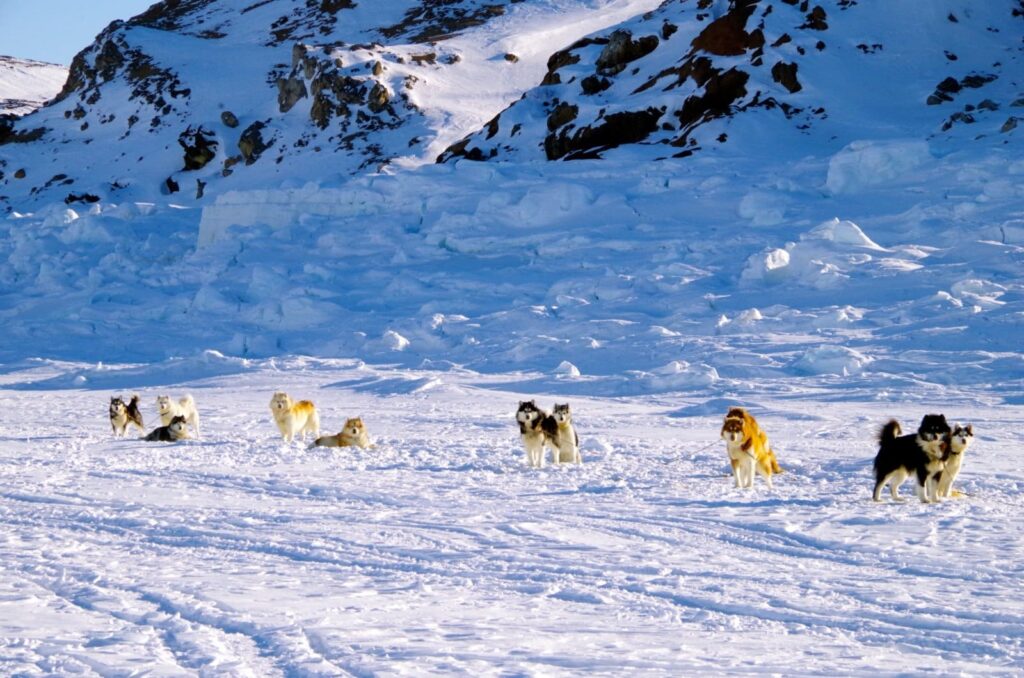
The low, slow grumbling of stirring tidewater glaciers echo as subtle background to the traditional songs of the Inuit people calling out to their ancestors. Majestic mountain peaks cast shadows over the bright white plains of Arctic ice and as the magical light of the midnight sun casts a glow across the Northern Arctic Circle, all traditional concepts of time and place are lost as you immerse in new surroundings.
Few visit Greenland given the preconception of the ever-changing landscape and testing weather conditions. But the more adventurous will love this destination as the Inuits know their land like no other, and with their help, you will witness their authentic lives set in the most beautiful of landscapes.
Glide through the frozen fjords, tucked under warm reindeer furs, accompanied only by the soft beating of padded feet as the sled dogs bound across the ice. Enjoy a hike up the mountains in the early hours as the soft pink and orange hues create a dreamlike path onwards. Learn their age-old hunting techniques whilst you wait for their baited ice-fishing hooks to catch your next meal.
Delight in the fact that few are brave enough to visit, but those who do, are rewarded tenfold.
The Lost City of Jordan, or Petra as it is more commonly known, already features as a Wonder of the World. However, the city goes beyond the famous centre we see today and smaller hubs of civilisation can be found off the tourist trail, landmarked by Siq al-Barid in Little Petra. Once a place brimming with lush green gardens, groves and orchards, it would attract nomads from across the continent who sought to exploit the pleasures of this small piece of paradise. This is where you discover the ‘real Jordan’ and its history of merged faiths and cultures.
The Bedouin people are among the oldest and most fascinating communities that still dwell in the city’s ruins. Though many settlers moved on to the nearby village of Umm Sayhoun, they earnestly welcome visitors into their communities to show them the traditional way of life that echoes that of their 2,000 year old ancestors.
Sit alongside the families, often at least four generations wide, hearing the wise stories about life in the shadow of the Rose City. Share a delicious meal of spiced meats, barbecued vegetables, soft breads and fragrant rice that has been slow cooked underground. Sip on your freshly brewed coffee and revel in the enchanting performances of traditional musical instruments and the reciting of classical poetry.
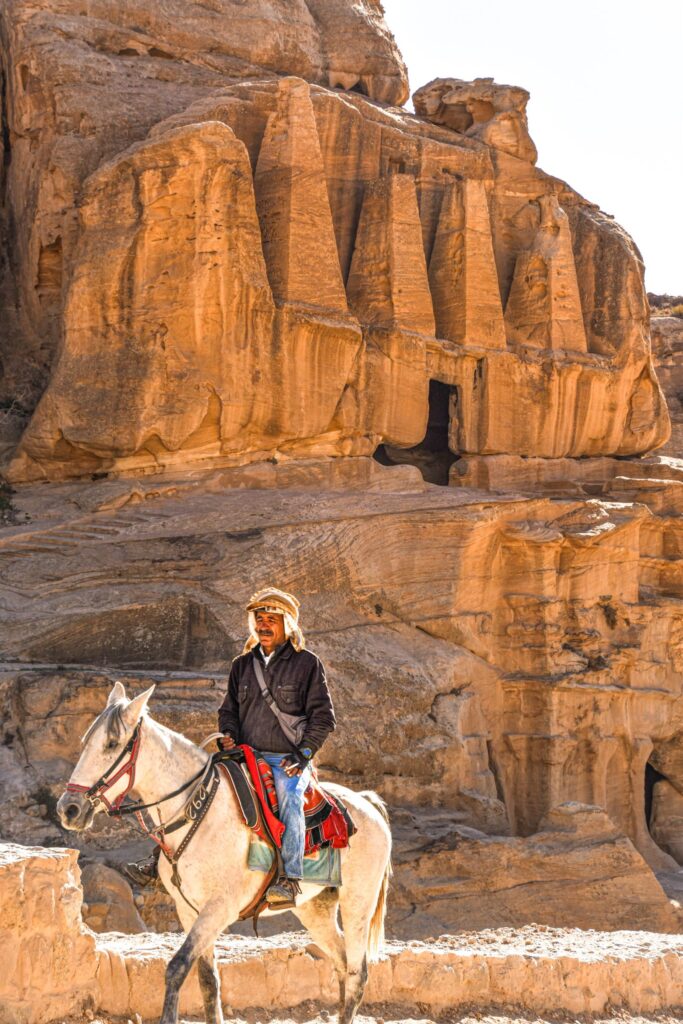
The Kunene River forms a natural north-western border between Angola and Namibia. From thundering waterfalls to tranquil rock pools, the river has become a precious resource for those who have settled in this unrelenting part of Africa.
None relying on it more so than the Himba – a tribe of semi-nomadic pastoralists – whose predominantly itinerant lifestyle gives meaning to the phrase; home is where your people are. Tucked away in one of northern Namibia’s wilder corners, they are a resilient society that has thrived in its refusal of modern lifestyle. Staying connected to the Earth is an underlying principle of their way of life. Dependent on herding, hunting and gathering, their ancient customs and practices have forged their existence.
More recognisable by their appearance than name, the painting of women’s skin with a deep red otjize paste serves more than protection against the harsh elements; the ritual symbolises the richness of the lands across which they roam. Those who go beyond the boundaries of their villages or choose to welcome outsiders do so on their terms, and it is here, in the Kaokoveld region, that you can experience a truly authentic way of life in Namibia. Their independence from the modern man’s needs, offers every outsider an opportunity to re-evaluate the “necessities” of our western world. As much as their remoteness presents numerous challenges, their isolated existence along the Kunene River has allowed them to preserve their unique way of life.
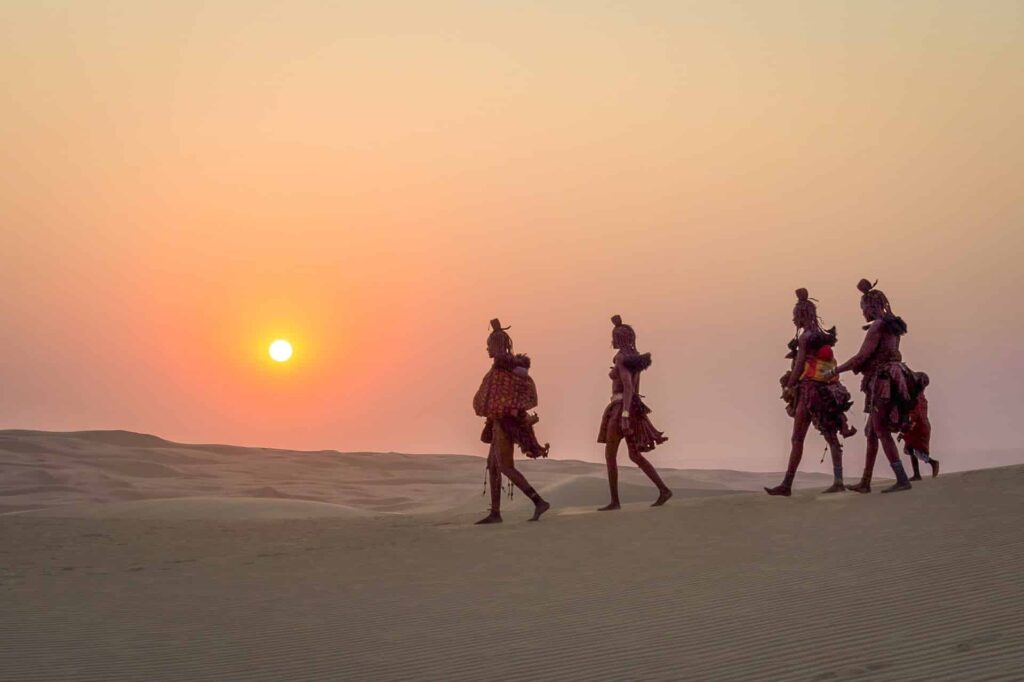
Along the winding mountain pass of Dochula, settled between snow-capped peaks, lies the sacred site of the Chortens of Bhutan. The remarkable monument is a collection of 108 religiously sanctioned stone pillars. Built to honour the memory of fallen soldiers of the Royal Bhutan Army, who lost their lives during a military operation against insurgents. Each has been intricately carved and adorned with traditional motifs, easily recognisable for its distinct white and red colouring.
A scene of continual pilgrimages, it is a place where elderly Buddhists come to offer prayer. Draped in saffron robes, clutching traditional prayer beads, their soft chants carry through the air as they wander through the grounds. Visit at sunset when worshippers gather from all around and gently start to spin the ornate prayer wheels that line the monuments. Observe with awe as they begin to recite mantras, replicating the motion of the prayer wheels with their bodies, sending their prayers high into the heavens.
For all of Bhutan, this provides a place where locals can feel connected to the departed. The monument has become a significant symbol of bravery and victory and an integral part of the country’s modern culture. Aptly located in outstanding natural beauty, it provides unrivalled 360-degree panoramic views of the famous Himalayas, a suitable backdrop to a profoundly spiritual site.
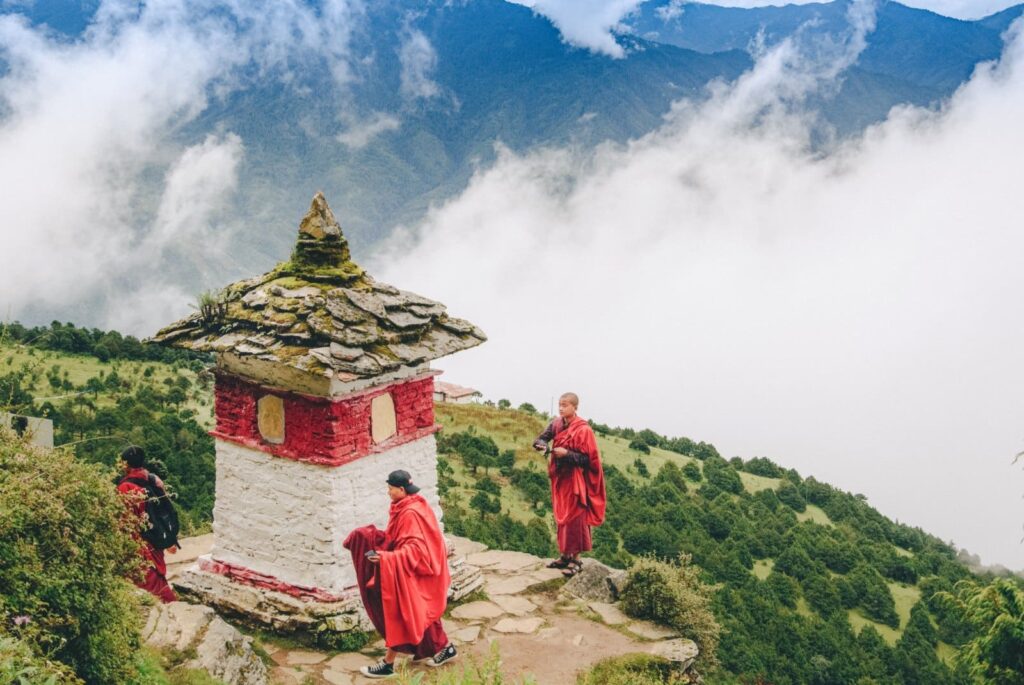
People cross oceans to visit the legendary Machu Picchu, only to find themselves in a feverish crowd waiting for a photo opportunity. But deep in the less polished corners of the Peruvian Andes lies Choquequirao, a citadel thought to be three times the size of Machu Picchu with only a dozen visitors each day.
Meaning ‘cradle of gold’, Choquequirao is a treasure trove of ancient archaeology and only 30% of the ruins have been freed from the jungle so far. The partially excavated Inca ruins sit high upon sprawling mazes of green terraces and are thought to have been one of the final royal refuges as the empire crumbled and royalty fled Cuzco. On the scarce occasion that you aren’t here alone, you will find locals offering prayers to the Gods asking for protection against the elements.
Perched on the edge of the platforms, surrounded by silence, enjoy uninterrupted views of the breathtaking Apurimac Valley. Enveloped by lush rainforest observe the precious Andean condors as they circle above. Much like Machu Picchu, parts of the site are aligned to the stars, which means stargazing is like holding up a mirror to the Milkyway.
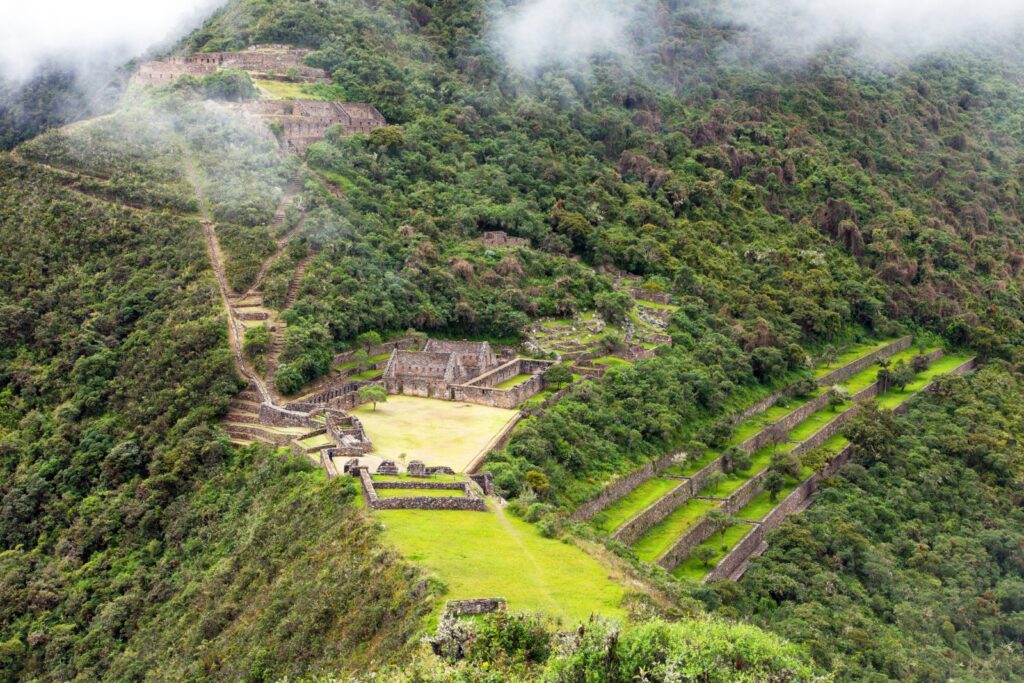
In a rugged river valley that sits on the Russian and Mongolian border is the Siberian Taiga Forest. In the subarctic area only reachable by horseback, and remote even by Mongolian standards, the dense mossy marshlands are broken up by the evergreen forests and the teepee-like tents of the last people who have chosen this wilderness as home.
The Tsaatan Reindeer Herders are a small nomadic community that migrate around the untracked landscape which facilitates their rural way of life. Their camps, situated by verdant green riverbanks, are encompassed by high mountains and white trunked ghost trees. The herders often move between Zuun (East) and Barone (West), seeking fresh pasture for their reindeer. Tsaatan translates as ‘people with reindeer’ in Mongolian – and they depend on them for nearly all aspects of their survival.
For those who wish to abandon their chosen comforts and embark on the journey that the Tsaatans make so regularly, you will be met with beaming smiles but chores aplenty. Surviving in this isolated landscape requires work and an extra pair of hands is always welcome. You’ll learn how to milk reindeer, ride out to collect firewood and master traditional recipes. There is no doubt that you will leave with a new appreciation for life in the wild, but also for the relationship between man and animal. And this is one of respect and reverence – after all – they cannot be Tsaatans without their reindeer.
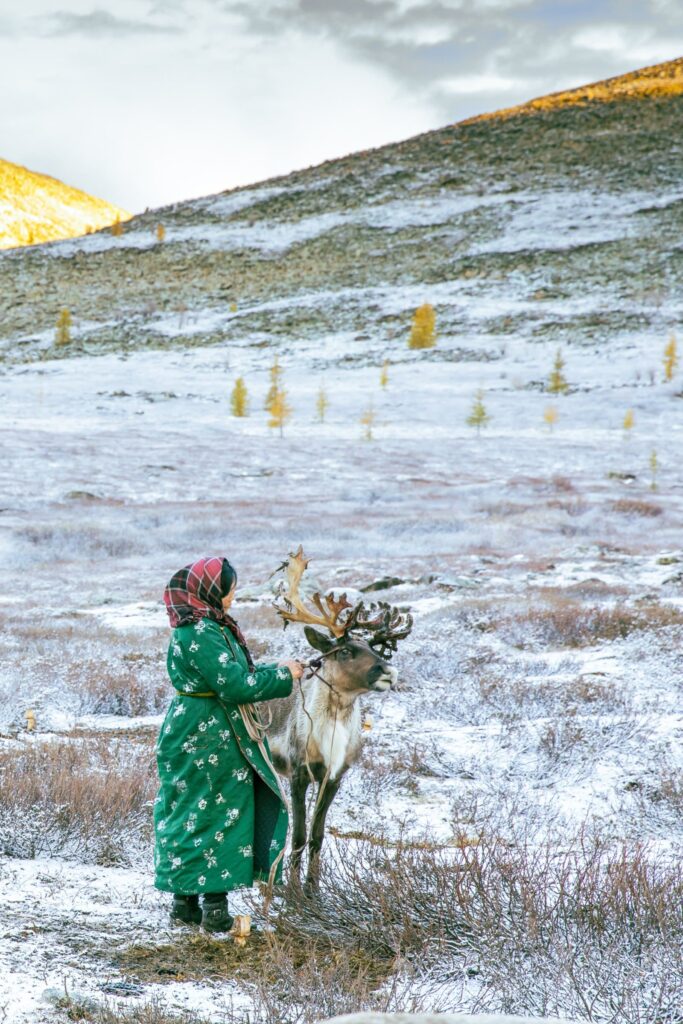
There are numerous theories regarding the origins of the Monolithic Cave Churches of Lalibela. However, one of the more divine explanations is that King Lalibela, aided by an army of angels, sculpted the magnificent stone monuments in a single night. His vision was to build a ‘New Jerusalem’, one that would welcome Christians from every corner of the world. Now, we understand the idea of architectural angels is a little harder to get behind. But there is no denying that these shrines have become significant in unifying people from many different cultures through religion and tradition.
For centuries, devoted worshipers fill the courtyards and gather at the edges of the cavern – their ivory robes enveloping the rock-hewn churches in a sea of white. Witness as they come together to perform powerful prayer in its rawest form, just as it would have been over 800 years ago. Their voices build as the chants rise out from the cave’s depths, carrying across the surrounding desert. Incense pours out from the entrances, the sound of hypnotic drum beats reverberating through the air as priests lead their people in song.
Such scenes are not exclusive to Lalibela; with hundreds of these rock-hewn churches spanning the whole of Ethiopia, from the Simien mountains to the Mago National Park. These ancient sanctuaries are essential to providing worshippers, who are often spread far and wide, a place of solace and celebration. Their gatherings are a spectacle not to be missed, even if you do not share their practice.

SIGN UP